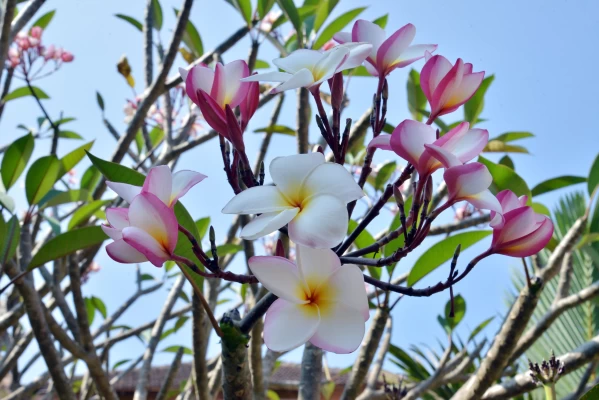Kingdom : Plantae
Clade : Angiosperms
Order : Gentianales
Family : Apocynaceae
Subtribe : Plumeriinae
Genus : Plumeria
Plumeria rubra is a deciduous plant species belonging to the genus Plumeria.
Originally native to Mexico, Central America, Colombia and Venezuela, it has been widely cultivated in subtropical and tropical climates worldwide and is a popular garden and park plant, as well as being used in temples.
P. rubra generally inhabits hot and rocky areas with dry to moderate rainfall. They can survive in locations with prominent dry seasons, where they can flower on the bare branches, or in more humid conditions, where they can remain evergreen.
It grows as a spreading tree to 7–8 m (23–26 ft) high and wide, and is flushed with fragrant flowers of shades of pink, white and yellow over the summer and autumn.
Plumeria rubra belongs to the family apocynaceae and grows as a spreading shrub or small tree to a height of 2–8 m (5–25 ft) and similar width.
It has a thick succulent trunk and sausage-like blunt branches covered with a thin grey bark. The branches are somewhat brittle and when broken, ooze a white latex that can be irritating to the skin and mucous membranes. This latex found in the stem of the plants is in fact toxic, but not deadly unless present in large quantities. The large green leaves can reach 30 to 50 cm (12 to 20 in) long and are arranged alternately and clustered at the end of the branches. The boles of these plants can be up to 25 cm in the wild.
The flowers are terminal, appearing at the ends of branches over the summer.
they are strongly fragrant, and have five petals. The flowers give off their fragrance in the morning and in the evening. The common pink to white with shades of yellow in the centre of the flower. Initially tubular before opening out, the flowers are 5–7.5 cm.




